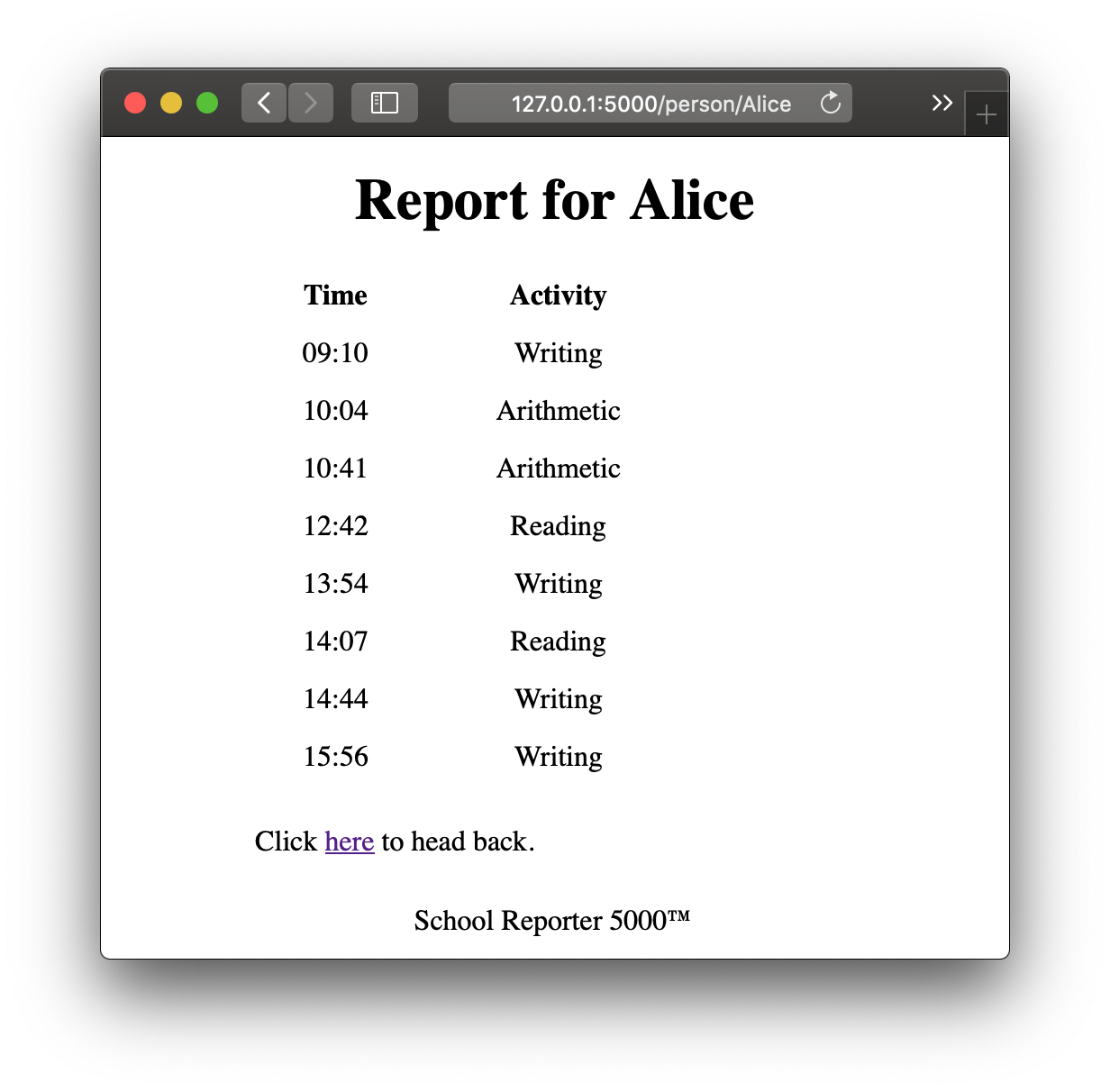Introduction
The other day, someone asked me about the difference between “an API and a regular webpage.” After understanding more about the context of their question, I tried to come up with a decent explanation about the differences between a server sending HTML pages and one handling REST API requests. As a thousand words leave not the same deep impression as does a single deed, I thought I’d put together a tiny demonstration that serves HTML to a web browser and JSON over a REST endpoint. My demo uses the Flask microframework to handle the details; you can find a copy here, though we’ll go through some of it below.
How smol?
Before we get into the specifics, here’s how tiny the demo is: the whole thing, including a flake.nix file to set the stage, is under 115 lines.
~/github/tiny_api_demo ∃ tokei
===============================================================================
Language Files Lines Code Comments Blanks
===============================================================================
CSS 1 10 10 0 0
HTML 3 41 41 0 0
Markdown 1 10 0 6 4
Nix 1 25 23 0 2
Python 2 54 40 2 12
===============================================================================
Total 8 140 114 8 18
===============================================================================
This whole thing cuts so many corners it might as well be a sphere. It’s certainly not a production-ready example by any stretch of the imagination; it’s only enough for demonstration purposes.
Preliminaries
First, we need some data.
Pretend we’re creating the School Reporter 5000™, wherein we have student information that consists of a collection of (timestamp, person, activity) tuples.
In data.py, we generate some fake data.
Our application code will interface with this data via NAMES and SELECT; pretend this stands in for a proper database.
from datetime import datetime, timedelta
from itertools import accumulate
from operator import add
import random
random.seed(1729)
NAMES = ["Alice", "Bob", "Carol", "Dave"]
_ACTIVITIES = ["Reading", "Writing", "Arithmetic"]
_DATA = [
{
"timestamp": ts.time().isoformat(timespec="minutes"),
"person": random.choice(NAMES),
"activity": random.choice(_ACTIVITIES),
}
for ts in accumulate(
(timedelta(minutes=random.randrange(17)) for _ in range(42)),
func=add,
initial=datetime.today().replace(hour=9),
)
]
SELECT = {name: [x for x in _DATA if x["person"] == name] for name in NAMES}
App
The School Reporter 5000™ has three routes, all described in app.py.
We serve HTML for the homepage at /index.html and individual person pages at /person/<name> for each of the names in NAMES.
We also serve JSON in response to GET requests via the /api/<name> route.
Thanks to Flask, we even have rudimentary error handling.
from flask import Flask, jsonify, render_template
from data import NAMES, SELECT
app = Flask(__name__)
@app.route("/")
def home():
return render_template("index.html", names=NAMES)
@app.route("/person/<string:name>")
def person(name):
try:
return render_template("person.html", name=name, data=SELECT[name], error=False)
except KeyError:
return render_template("person.html", name=name, error=True), 400
@app.route("/api/<string:name>")
def api(name):
try:
return jsonify(SELECT[name])
except KeyError:
return {"error": f"Unknown person {name}"}, 400
With the server running, we can visit the home page:

Or report pages for any specific student:

However, we can also get JSON data for individual students by pinging the REST endpoint; using, e.g. HTTPie to query the endpoint via http --body :5000/api/Dave, we get

Everything Else
To round out the example, we also have some minimal CSS and two other HTML templates.
Here’s the flake.nix to specify the W O R L D:
{
description = "Tiny API Demo";
inputs = {
flake-utils.url = "github:numtide/flake-utils";
nixpkgs.url = "github:NixOS/nixpkgs/nixos-22.11";
};
outputs = {
self,
flake-utils,
nixpkgs,
}:
flake-utils.lib.eachDefaultSystem (system: let
pkgs = import nixpkgs {inherit system;};
py = pkgs.python310.withPackages (p: [p.flask]);
in {
packages.default = pkgs.writeShellApplication {
name = "tiny_api_demo";
text = ''
FLASK_APP=app.py ${py}/bin/python -m flask run
'';
};
});
}
From the base directory, one can run nix run to set up the environment and kick off the server.